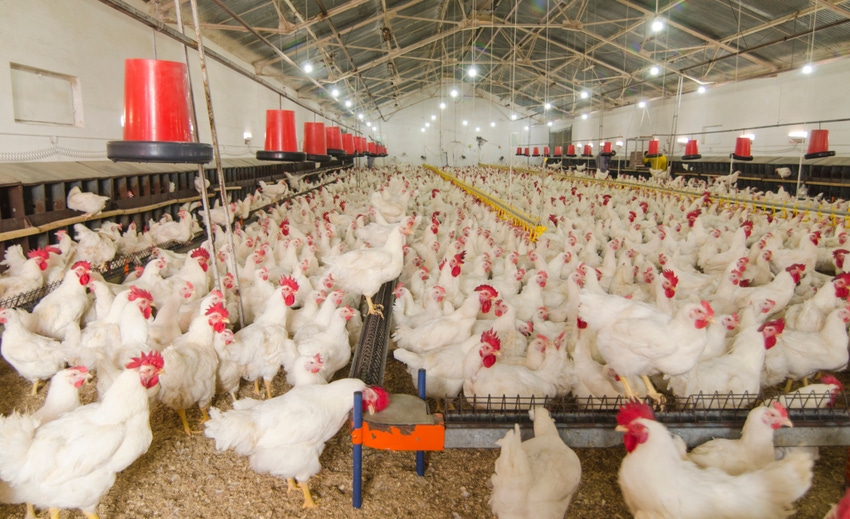Split-feeding scheme for broiler breeders developed
Proprietary program said to improve hatching rates and welfare, reduce feed costs and support sustainability.
October 19, 2020

A proprietary split-feeding program for broiler breeders developed by Trouw Nutrition, a Nutreco company, has demonstrated improved hatching rates and lower feed costs in research center trials and commercial farm studies, according to an announcement from the company.
The system delivers nutrients that support the birds’ requirements for egg formation at different times of day, as research conducted with laying hens shows birds’ circadian rhythms affect feed intake, Trouw Nutrition said. Birds’ intake of protein and energy nutrients is higher in the morning when the egg yolk is produced, while calcium intake increases later in the day.
These research findings inspired Trouw Nutrition scientists to adapt feeding programs so birds receive different nutrients at different times of day — energy, protein and phosphorous to support egg-laying production in the morning, and nutrients to support eggshell formation in the afternoon.
According to the announcement, broiler breeder studies conducted at the Trouw Nutrition Poultry Research & Development Centre and on five commercial farms validate the performance, economic and animal welfare benefits of a split-feeding strategy.
A series of research center studies involving more than 2,800 broiler breeders compared performance parameters of hens fed a regular broiler breeder diet to hens receiving a split-feeding program in the morning and afternoon. The split-feeding program was designed to provide a more accurate nutrient supply, according to the egg formation need of breeders, Trouw Nutrition said. This dietary strategy also provided less crude protein (CP), apparent metabolizable energy (AME) poultry, calcium and digestible phosphorous compared to the control diet.
Researchers evaluated egg production frequency, time spent eating, bird behavior and eggshell quality.
Some key findings of the research center studies include:
Increased egg production in birds fed a split-feeding regimen compared to the control group, resulting in higher total and hatching eggs, as well as higher chick production;
A significantly lower feed cost for birds fed the split-feeding system compared to birds receiving the control diet, and
Birds receiving the split-feeding program demonstrated improved feathering, reduced pecking and showed fewer behaviors indicative of hunger.
Trouw Nutrition said the research center results were further confirmed by three concept tests of split-feeding program on commercial farms. Farm studies at SADA company were conducted between May 2015 and November 2018, involving 122,600 breeders (Ross/Cobbs).
The research findings further noted that the efficiency of the split-feeding program means broiler breeder hens consume fewer nutrients and carbon dioxide emissions are reduced up to 10%, resulting in less excretion of nutrients into the environment, the announcement said.
“Split feeding brings breeders closer to their voluntary and physiological feeding behavior. This system’s ability to address the nutritional requirements of broiler breeders supports efficient feeding, producer economics and farmers’ sustainability efforts,” said Felipe Sanchez Fernandez Trouw Nutrition global application and solution specialist, poultry and technology transfer.
You May Also Like



